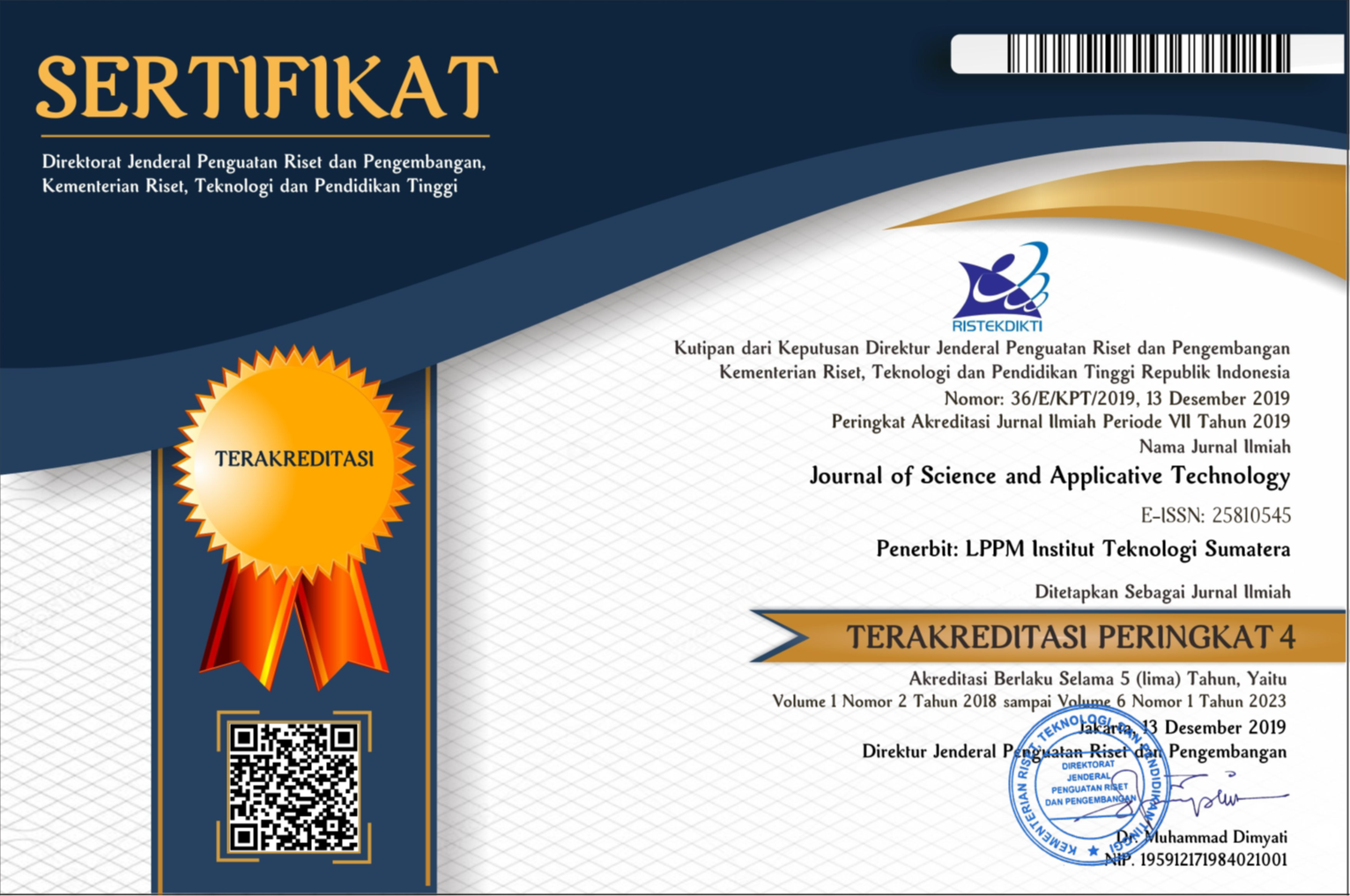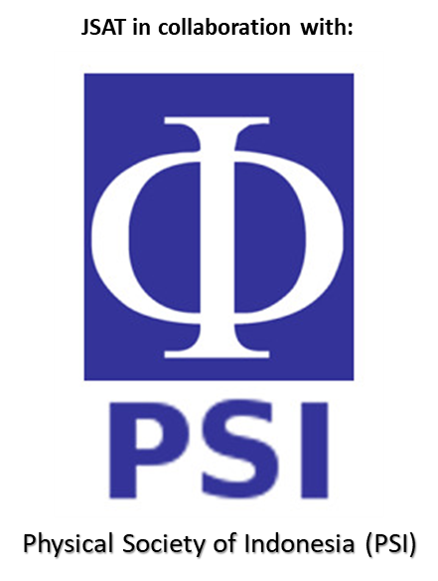Analisis Interaksi Aliran Darah dan Pembuluh Serta Pengaruh Kebebasan Mesh Pada Simulasi Hemodinamik Berbasis Metode Elemen Hingga
Abstract
Cardiovascular diseases are the world’s leading cause of death with significant death rates caused by abnormalities in vessels such as aneurysms and stenosis. These conditions can potentially cause blockage and thinning of vessels which may lead to heart attack, stroke, and bleedings. Recently, computational simulation methods are frequently used in blood flow analysis. These methods are frequently used in vascular fluid dynamics analysis which relate to the origin of a disease, efficacy prediction in installation of therapeutic instruments and complements the in vitro studies. This article presents an example of a simple vascular simulation to study the effect of blood flow with respect to vascular wall displacement. Furthermore, this research shows the importance of formal CFD pre-processing such as mesh independence testing which influences the simlation accuracy as well as vascular flow prediction and its effects on vascular wall displacement. In this research, it is concluded that the number of mesh elements affects the accuracy of vascular wall shear stress (WSS) calculations with average WSS difference of 0.8 Pa with no significant difference in wall displacement values. An average WSS of 1.95 Pa and a wall displacement of 5.7 µm are obtained from the blood flow simulation in this study.
Downloads
References
[2] Fajrian, “8 Daftar Penyakit Terbesar yang ‘Gerogoti’ BPJS Kesehatan,†CNN Indonesia, 2018.
[3] B. Blocken, “50 years of Computational Wind Engineering: Past, present and future,†J. Wind Eng. Ind. Aerodyn., vol. 129, pp. 69–102, 2014.
[4] Y. Li et al., “Simulation of hemodynamics in artery with aneurysm and stenosis with different geometric configuration,†J. Biomech. Sci. Eng., vol. 9, no. 1, pp. 1–11, 2014.
[5] G. Janiga, L. Daróczy, P. Berg, D. Thévenin, M. Skalej, and O. Beuing, “An automatic CFD-based flow diverter optimization principle for patient-specific intracranial aneurysms,†J. Biomech., vol. 48, no. 14, pp. 3846–3852, 2015.
[6] H. Zakaria, A. M. Robertson, and C. W. Kerber, “A Parametric Model for Studies of Flow in Arterial Bifurcations,†Ann. Biomed. Eng., vol. 36, no. 9, pp. 1515–1530, Sep. 2008.
[7] T. Kinoshita et al., “Effect of a notch at the distal end of a microcatheter on vein deformation in segmental adrenal venous sampling : a preliminary study using computational fluid dynamics,†Med. Biol. Eng. Comput., vol. 57, pp. 1425–1436, 2019.
[8] N. K. Putra, P. S. Palar, H. Anzai, K. Shimoyama, and M. Ohta, “In Search for a Better Stent : Surrogate based Multi - Objective Optimization of Stent Design under Influence of Vessel Wall Deformation,†in EMBC, 2017.
[9] N. K. Putra, P. S. Palar, H. Anzai, K. Shimoyama, and M. Ohta, “Multiobjective design optimization of stent geometry with wall deformation for triangular and rectangular struts,†Med. Biol. Eng. Comput., vol. 57, pp. 15–26, 2019.
[10] J. W. Freeman, P. B. Snowhill, and J. L. Nosher, “A link between stent radial forces and vascular wall remodeling: the discovery of an optimal stent radial force for minimal vessel restenosis.,†Connect. Tissue Res., vol. 51, no. 4, pp. 314–26, 2010.
[11] J. Tu, G. H. Yeoh, and C. Liu, Computational fluid dynamics: a practical approach, First. USA: Elsevier Inc., 2008.
[12] Y. C. Fung, “Blood Flow in Arteries,†in Biomechanics: Circulation, Second., New York: Springer-Verlag, 1996, pp. 108–205.
[13] N. Westerhof, N. Stergiopulos, and M. I. M. Noble, “Viscosity,†in Snapshots of Hemodynamics: An Aid for Clinical Research and Graduate Education, Second edi., New York: Springer, 2010, pp. 3–8.
[14] K. Srinivas, T. Nakayama, M. Ohta, S. Obayashi, and T. Yamaguchi, “Studies on Design Optimization of Coronary Stents,†J. Med. Device., vol. 2, pp. 011004-1–7, 2008.
[15] N. Westerhof, N. Stergiopulos, and M. I. M. Noble, Snapshots of Hemodynamics, Second. New York: Springer, 2010.
[16] J. Mejia, B. Ruzzeh, R. Mongrain, R. Leask, and O. F. Bertrand, “Evaluation of the effect of stent strut profile on shear stress distribution using statistical moments.,†Biomed. Eng. Online, vol. 8, p. 8, 2009.
[17] S. Beier et al., “Hemodynamics in Idealized Stented Coronary Arteries: Important Stent Design Considerations,†Ann. Biomed. Eng., vol. 44, no. 2, pp. 315–329, 2015.
[18] C. Chiastra, F. Migliavacca, M. Ã. MartÃnez, and M. Malvè, “On the necessity of modelling fluid-structure interaction for stented coronary arteries,†J. Mech. Behav. Biomed. Mater., vol. 34, pp. 217–230, 2014.
[19] F. Otsuka, M. Nakano, E. Ladich, F. D. Kolodgie, and R. Virmani, “Pathologic Etiologies of Late and Very Late Stent Thrombosis following First-Generation Drug-Eluting Stent Placement,†Thrombosis, vol. 2012, pp. 1–16, 2012.
All the content on Journal of Science and Applicative Technology (JSAT) may be used under the terms of the Creative Commons Attribution-NonCommercial 4.0 International License.
You are free to:
- Share - copy and redistribute the material in any medium or format
- Adapt - remix, transform, and build upon the material
Under the following terms:
- Attribution - You must give appropriate credit, provide a link to the license, and indicate if changes were made. You may do so in any reasonable manner, but not in any way that suggests the licensor endorses you or your use.
- NonCommercial - You may not use the material for commercial purposes.
- No additional restrictions - You may not apply legal terms or technological measures that legally restrict others from doing anything the license permits.





















